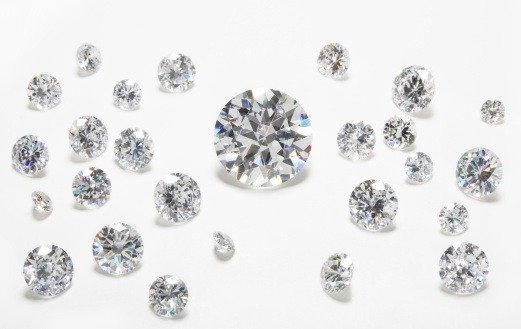Deep within the Earth’s crust, numerous precious minerals reside, and zircons is a gemstone that has captured the attention of many. Zircon possesses not only a stunning appearance but also a wide range of applications and intriguing scientific value. This article will delve into the origin, characteristics, mining, uses, and the profound impact of zircon on Earth science and industry.
Part One: Origin and Discovery of Zircons
What is the historical background of zircon, and in which era did its history begin? Who was the first to discover zircon, and what is the connection between the mineral’s name and its characteristics? This section will explore the historical origins of zircon and its significance in geology and scientific research.
Part Two: Characteristics of Zircon
Zircon’s popularity among mineralogists and gem enthusiasts is due to its unique characteristics. Zircon exhibits attractive features in terms of appearance, color, hardness, and luster. Its color range is extensive, from colorless to a variety of hues. Additionally, zircon plays a crucial role in geological dating. With minute amounts of cerium, zircon’s radiometric dating method has become a key tool in determining the ages of rocks and minerals.
Part Three: Zircon Mining
Zircon mining is a complex and technically intensive process. The location of mining, extraction methods, and ore processing all require a high level of expertise. This section will discuss the current state of the global zircon industry and the environmental and social impacts of mining.
Part Four: Versatile Applications of Zircons
Zircon finds a wide range of applications, primarily in ceramics, jewelry, and the nuclear industry. In the ceramics industry, zircon is often used as a refractory material due to its high melting point and corrosion resistance. In the jewelry industry, zircon is a popular gemstone substitute because of its beauty and affordability. Moreover, zircon plays a critical role in the nuclear industry, being used for the coating of fuel rods in nuclear reactors. This section will provide a detailed overview of these applications and the prospects for zircon in other fields.
Part Five: Zircon’s Role in Earth Science
Zircon not only has an impact in industry but also plays a pivotal role in earth science research. It aids in the study of Earth’s history, plate tectonics, and crustal evolution. By analyzing trace elements and isotopes within zircon, geologists can reconstruct geological histories, pinpoint the periods of rock formation, and understand the Earth’s evolutionary processes.
Part Six: Future Prospects and Challenges of Zircon
While the zircon industry is thriving, it faces certain challenges, including resource depletion, environmental impacts, and ethical concerns. This section will explore how to strike a balance between sustaining industry growth and preserving environmental and social responsibility.
Conclusion
Zircon is a fascinating gemstone and geological marvel. Its unique characteristics, wide range of applications, and importance in scientific research make it a treasure from deep within the Earth. By delving into zircon, we can better appreciate the positive impact this precious mineral has had on our world. It is hoped that in the future, a balance can be found in zircon development and application to achieve sustainable growth.






